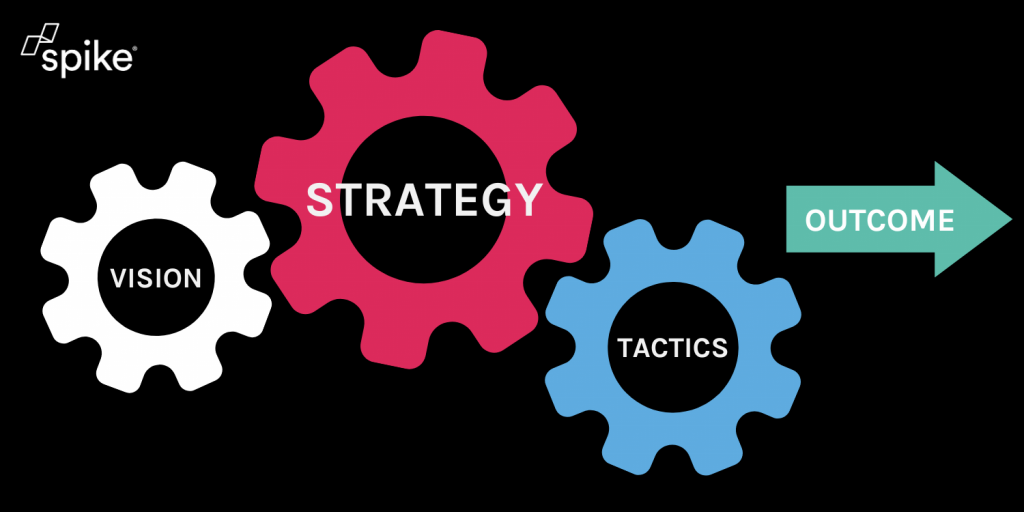This is the second in a three-part series detailing a twelve-step programme of digital strategy. If you want to remind yourself of the first three steps, you can find that article here
Now that you understand the problem and you have accepted the solution lies in this programme, it’s time for you to take some action. These next steps focus on identifying any mistakes you may have made by conflating strategy with tactics, correcting them, and beginning to put things in place to prevent you falling back into these misconceptions in the future.
Step 4: Made a searching and fearless inventory of our digital marketing plans
Undertaking a thorough review of our past work takes courage, but it’s an essential part of the process. You’ve gained experience and perspective since those plans were implemented, even the most recent ones, so it is as powerful an exercise as having a more knowledgeable peer review your work. As you reflect on those past plans, think about what advice you would have given to your past self if you were line managing them. Have they included a clear strategy and separate tactics which align to that approach? It’s crucial that you are honest with yourself at this stage so that you can identify areas of weakness in your planning to date.
Step 5: Admitted to our clients, to ourselves and to our colleagues the exact nature of where we had gone wrong
Having made your inventory, there will likely be a number of instances where you have muddled the definitions and subsequently fallen into a siloed approach, short-termism and underperformance. It would be easy at this point to say, “OK, I’ve learned from that and it won’t happen again,” but there’s a danger that there would be no one to hold you accountable to that promise. Besides which, this presents a great opportunity to educate your colleagues and your clients, to dispel their misconceptions about these distinct aspects of planning, and to ensure that you are all on the same page in the future. And for those of you who are worried that admitting to ‘mistakes’ in your work can damage your reputation with a client (especially when performance has actually been pretty good), remember that it demonstrates your integrity far more powerfully than sharing success stories all the time and that can only be a good thing.

Step 6: Were entirely ready to change our approach to strategy
Assuming you’re on board with everything I’ve said so far, being willing to adopt a new outlook should be fairly straightforward. Sticking with it can be harder, especially when client pressures and the temptation of “quick wins” are strongest, but you need to trust that your new approach will give you the best outcomes, regardless of those outside influences.
Step 7: Humbly sought help from trusted sources
N0 man is an island, and no marketer needs to be either. No matter how willing you are to make these changes, there’ll be times when it’s tough. That’s when having the right people around you will get you through. Find people who ‘get it’, who follow the same approach, and bounce ideas off them. The only thing to be wary of is trapping yourself in an echo chamber: yes, you need to surround yourself with those who have shown themselves to be knowledgeable in this area, but you also need to be able to challenge each other so that you can refine your plans together.
Step 8: Made a list of all digital marketing plans we had harmed and became willing to make amends to them all
You’ll already have done this to some extent in Step 4 but now you need to review all live and upcoming plans to check that there is a long-term vision with an overall direction and outcomes, and a timeline of actions needed to achieve that goal. If you find any plans where some (or all) of these are unclear or missing, add them to your list. It’s also a good idea to prioritise them in terms of where improvements will be most keenly felt so that you don’t bite off more than you can chew with Step 9.
Step 9: Made direct amends to such plans wherever possible, ensuring they had a clear strategy and well-defined tactics to support it
You should now have a prioritised list of plans which are either unclear or missing one of the discrete aspects of planning, i.e. strategy or tactics – or, worst case, both! Now you need to go back and rework these plans. Make sure you have clearly set out the “who” and the “why” (strategy), and the “what”, “when” and “how” (tactics). This may feel like wasted effort, especially if performance is OK, but it’s better to do it now and drive better performance for the remainder of the campaign or project than to shirk responsibility and hope for the best. Once you have made the changes, annotate your analytics software so that you can measure any uplift in performance which results from their implementation.
Once you have completed these steps, you’ll be in a much better position with clients and colleagues alike. Your plans will run smoother, performance will be better, and you’ll be able to take a broader view of the challenges which inevitably arise during any marketing campaign. All that’s left after this is to maintain your approach, something which I will cover in the next article.
Phil Eaves
Phil started out as a Paid Media specialist, Phil then moved into broader Paid Media, Digital Strategy and Performance Marketing roles for a range of eCommerce and B2B clients.
More recently, Phil has developed the Strategy offering at Spike, creating data-driven plans across Search channels to maximise performance and, ultimately, commercial value.
